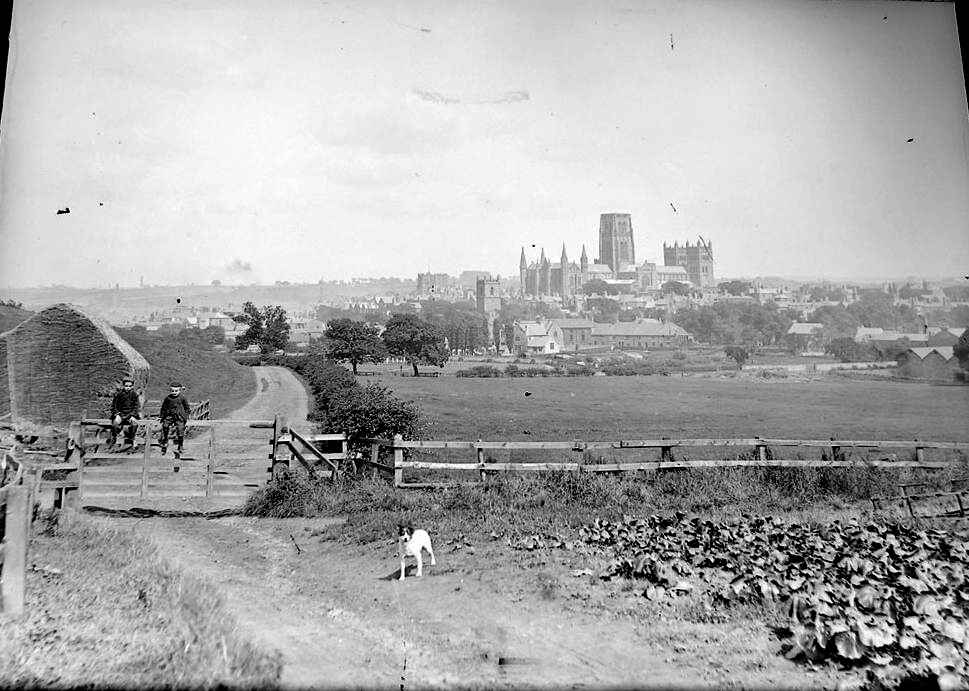
Figure 1.--This 19th century English photograph shows two young lads sitting on a farm gate with Durham City in the background. Click here to see a blow up of the two boys on the gate. The photograph is undated, but looks like the 1880s to us. Notice how the Surham Cathedral and castle, classic Norman structures, dominate the countryside for miles around. A reader writes, "My elder daughter went to Durham University so it looked rather familiar. Unusually the etching is taken from the hills looking down on Durham Cathedral. Usually paintings and photographs are taken from below, particularly the river, so it was an unusual aspect. The massive central tower is its unique feature." Image courtesy of the BP collection. |

